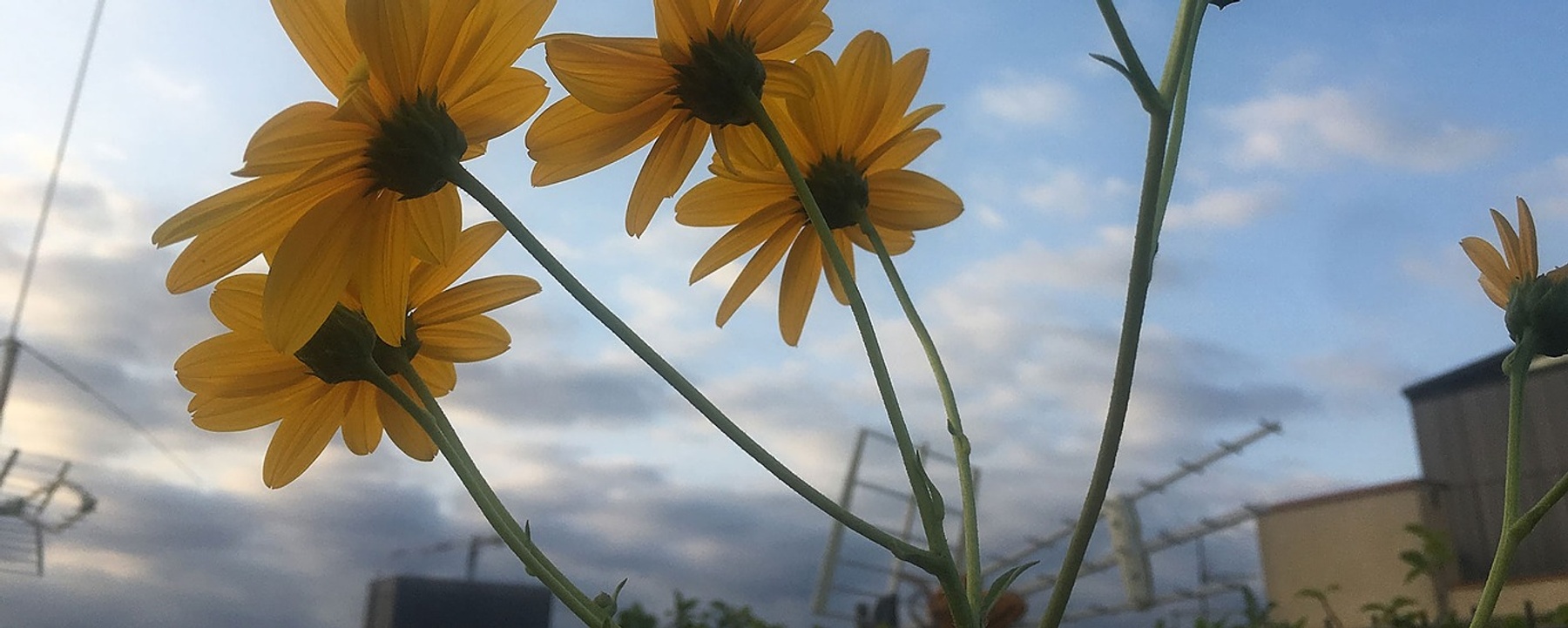
58°C in four days
You *can* do hot composting in the city!
Today when I went to visit my compost pile, the first thing I noticed was that the level of materials had gone down considerably. They say that happens, but it surprised me just the same. But I was more surprised still when I put in the thermometer and it quickly jumped to 30, then 40, then 50, until stoppping at 58°C (136°F!). It made me really happy because that's definitive proof that the limit of a cubic meter of material is false: you can get to 58°C with only 288 liters, like mine, on a roof in the middle of the city.
Let's rewind a bit: organic material decomposes no matter what you do. But if you only have branches and dead leaves, it goes really, really slowly. You can accelerate the decomposition process in a compost pile by putting the proper proportion of 'greens' (material with high nitrogen content like the greens left over from a farmers market stall) and 'browns' (material with high carbon content, like branches, dry leaves, pine needles and such, and what we have in abundance in the city: cardboard and paper). And it doesn't just accelerate, but when it reaches those high temips, it kills weed seeds and pathogens that might be in the compost. Hot composting, therefore, generates larger quantities of better compost faster.
And there's another factor: I want to do it in the city, and I want to do it the easiest way possible and I don't want to buy anything extra. If I can reuse stuff that would otherwise go to the dump, all the better.
If I hadn't tried this until now it's because everyone says it's impossible to do it with less than a cubic meter of material in the pile in order to get to the necessary temperature. But as you've seen, that's not true. Let me go over the parameters of the experiment again:
1. I have a compost bin that I got from Aquil·lea a Tàrrega that measures 60 x 60 x 80cm, or 288 liters, which is about 10 cubic feet. When I started this experiment last Sunday, it was maybe a quarter full with the old slow compost pile: a bit of dirt, old compost, branches, dead root systems, some worms and dead plants. Basically all the remains from the garden that the composting worms won't eat. This pile decomposed throughout the year, mostly thanks to the work of pill bugs and earth worms. Theoretically, I shouldn't put dirt in a hot compost pile, because it will lower the temperature, but I was too lazy to move it.
2. Sunday, Jan 31 I dumped 8 huge bags of leftovers from the vegetable market into the bin on top of what was already there. The place where I buy veggies gives me their scraps: cabbage stems and leaves, wilted chard, lettuce and escarole that they can't sell. I cut it all up into chunks with a knife. I also put it some cardboard boxes, stripped into small pieces.
What proportion should there be? It's a complicated question. They say the ideal proportion for hot compost of carbon to nitrogen is 30:1, but it's not easy to know exactly how much carbon or nitrogen there is in each thing. Green leaves start out with a lot of nitrogen (and carbon) and they lose nitrogen as they turn brown and dry up. Roughly, they recommend 2 parts green (like what they give me at the market) to 1 part brown (cardboard and dry leaves, etc.).
I've decided not to worry about the exact ratio too much. If the temperature doesn't rise, I'll put in more green, if it smells like ammonia or pee, I'll put in more browns. For the moment, it's going gangbusters.
3. All week, I've put in more greens and browns, and I added a little bit of compost that I already had. They say this helps add the necessary microbes. If you don't have some compost made already, just put some dirt, and if you don't have anything don't worry, soon you will.
4. Thursday, I measured the temperature for the first time: 35°C. Interesting, but still insufficient. Friday, 37°C, Saturday 43°C. But today, at 10 i the morning on a day that started out rainy and gray, it had gone up to 58°C. Incredible. When I stir it around, steam comes out! It gives off a smell of warm cabbage soup, not at all disagreeable. And the level in the pile has gone down considerably.
4. It's 58°C in the middle, but on the edges it's only 27 in the front and 43 in the back. Here's where having a larger pile is an advantage, just for the insulation factor. I put a little more cardboard in, thinking that maybe there was too much very very green. I also aired out the pile a bit with my corkscrew compost turner that I also got from Aquil·lea. The hot compost needs air to work properly. Yesterday I was listening to an Australian composter on Instagram who explained that putting air in the pile is really important for making it heat up. It's counterintuitive for me, it seems like putting air in would lower the temperature. But everyone says mixing is very important. We'll see.
6. While I was mixing the pile, I saw a lot of worms. I don't know if they're composting worms or earth worms, but it will (hopefully) get so hot in the pile that it won't be good for them. So I picked them out and put them in a planter. Someday I'll learn to tell the different kinds of worms apart and know where to put them.
I'd like to sign up to (or create if necessary) a whatsapp or telegram group dedicated to hot composting in Catalunya, to share experiences and knowledge. Do you know if such a thing exists? Would you be interested?
The last photo is off the nasturtiums that this year on cascading over the railing down to the terrace below. They are inspired by the cascades of nasturtiums at the Isabella Gardner Museum in Boston. In a way, they're part of this history since I've been having trouble with powdery mildew on my nasturtiums and that made me want to investigate how to kill the fungus and what I should do with the infected leaves, and it seems that hot composting might help me here too since it kills the fungus. (For now I've been spraying the nasturtiums with milk and picking off the yellowed leaves and putting them in the municipal organic compost. It seems like the milk is helping.)
As usual, I invite you to subscribe to my Aixeta page to support my experiments and writing about urban gardening.
Let's rewind a bit: organic material decomposes no matter what you do. But if you only have branches and dead leaves, it goes really, really slowly. You can accelerate the decomposition process in a compost pile by putting the proper proportion of 'greens' (material with high nitrogen content like the greens left over from a farmers market stall) and 'browns' (material with high carbon content, like branches, dry leaves, pine needles and such, and what we have in abundance in the city: cardboard and paper). And it doesn't just accelerate, but when it reaches those high temips, it kills weed seeds and pathogens that might be in the compost. Hot composting, therefore, generates larger quantities of better compost faster.
And there's another factor: I want to do it in the city, and I want to do it the easiest way possible and I don't want to buy anything extra. If I can reuse stuff that would otherwise go to the dump, all the better.
If I hadn't tried this until now it's because everyone says it's impossible to do it with less than a cubic meter of material in the pile in order to get to the necessary temperature. But as you've seen, that's not true. Let me go over the parameters of the experiment again:
1. I have a compost bin that I got from Aquil·lea a Tàrrega that measures 60 x 60 x 80cm, or 288 liters, which is about 10 cubic feet. When I started this experiment last Sunday, it was maybe a quarter full with the old slow compost pile: a bit of dirt, old compost, branches, dead root systems, some worms and dead plants. Basically all the remains from the garden that the composting worms won't eat. This pile decomposed throughout the year, mostly thanks to the work of pill bugs and earth worms. Theoretically, I shouldn't put dirt in a hot compost pile, because it will lower the temperature, but I was too lazy to move it.
2. Sunday, Jan 31 I dumped 8 huge bags of leftovers from the vegetable market into the bin on top of what was already there. The place where I buy veggies gives me their scraps: cabbage stems and leaves, wilted chard, lettuce and escarole that they can't sell. I cut it all up into chunks with a knife. I also put it some cardboard boxes, stripped into small pieces.
What proportion should there be? It's a complicated question. They say the ideal proportion for hot compost of carbon to nitrogen is 30:1, but it's not easy to know exactly how much carbon or nitrogen there is in each thing. Green leaves start out with a lot of nitrogen (and carbon) and they lose nitrogen as they turn brown and dry up. Roughly, they recommend 2 parts green (like what they give me at the market) to 1 part brown (cardboard and dry leaves, etc.).
I've decided not to worry about the exact ratio too much. If the temperature doesn't rise, I'll put in more green, if it smells like ammonia or pee, I'll put in more browns. For the moment, it's going gangbusters.
3. All week, I've put in more greens and browns, and I added a little bit of compost that I already had. They say this helps add the necessary microbes. If you don't have some compost made already, just put some dirt, and if you don't have anything don't worry, soon you will.
4. Thursday, I measured the temperature for the first time: 35°C. Interesting, but still insufficient. Friday, 37°C, Saturday 43°C. But today, at 10 i the morning on a day that started out rainy and gray, it had gone up to 58°C. Incredible. When I stir it around, steam comes out! It gives off a smell of warm cabbage soup, not at all disagreeable. And the level in the pile has gone down considerably.
4. It's 58°C in the middle, but on the edges it's only 27 in the front and 43 in the back. Here's where having a larger pile is an advantage, just for the insulation factor. I put a little more cardboard in, thinking that maybe there was too much very very green. I also aired out the pile a bit with my corkscrew compost turner that I also got from Aquil·lea. The hot compost needs air to work properly. Yesterday I was listening to an Australian composter on Instagram who explained that putting air in the pile is really important for making it heat up. It's counterintuitive for me, it seems like putting air in would lower the temperature. But everyone says mixing is very important. We'll see.
6. While I was mixing the pile, I saw a lot of worms. I don't know if they're composting worms or earth worms, but it will (hopefully) get so hot in the pile that it won't be good for them. So I picked them out and put them in a planter. Someday I'll learn to tell the different kinds of worms apart and know where to put them.
I'd like to sign up to (or create if necessary) a whatsapp or telegram group dedicated to hot composting in Catalunya, to share experiences and knowledge. Do you know if such a thing exists? Would you be interested?
The last photo is off the nasturtiums that this year on cascading over the railing down to the terrace below. They are inspired by the cascades of nasturtiums at the Isabella Gardner Museum in Boston. In a way, they're part of this history since I've been having trouble with powdery mildew on my nasturtiums and that made me want to investigate how to kill the fungus and what I should do with the infected leaves, and it seems that hot composting might help me here too since it kills the fungus. (For now I've been spraying the nasturtiums with milk and picking off the yellowed leaves and putting them in the municipal organic compost. It seems like the milk is helping.)
As usual, I invite you to subscribe to my Aixeta page to support my experiments and writing about urban gardening.

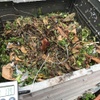
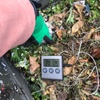
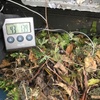
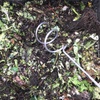
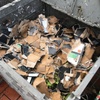
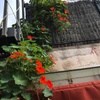
Write a comment
Log in with your account or sign up to add your comment.